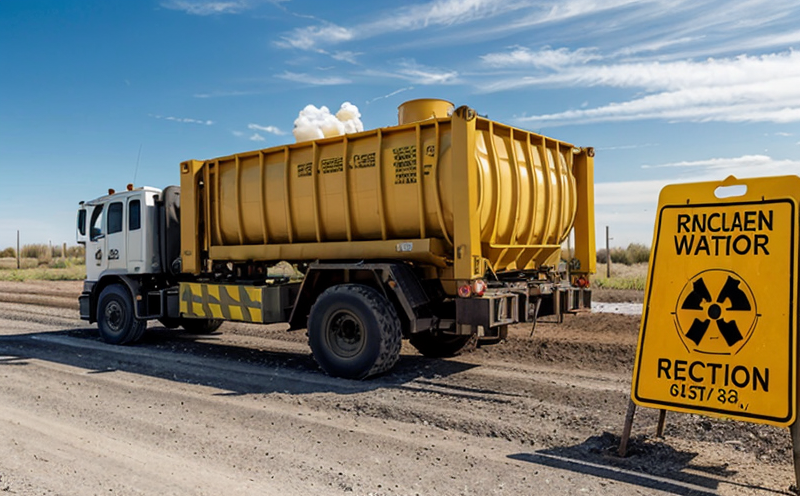ISO 9697 Gross Beta Activity in Radioactive Wastewater
The ISO 9697 standard provides a robust method for determining the gross beta activity concentration of radioactive waste in wastewater. This is an essential service for industries dealing with nuclear and radioactive materials, ensuring compliance with stringent environmental regulations.
The procedure outlined in ISO 9697 involves sampling wastewater from storage tanks or flow lines, filtering it through a pre-weighed filter cartridge, rinsing the filter with deionized water, drying the filter at a specified temperature, and measuring the beta activity using a liquid scintillation counter. This method ensures accurate quantification of beta-emitting radionuclides present in the waste stream.
The gross beta activity test is critical for assessing the safety and environmental impact of radioactive wastewater discharges into the environment. It helps facilities comply with international standards and local regulations, ensuring that they meet stringent quality control requirements while minimizing potential risks to public health and the environment.
Accurate measurement of gross beta activity is essential in nuclear fuel reprocessing plants, hospitals, research institutions, and any facility handling radioactive materials. The test helps identify and quantify radionuclides such as tritium (H-3), strontium-90 (Sr-90), and technetium-99m (Tc-99m) present in wastewater.
Compliance with ISO 9697 is mandatory for facilities that generate radioactive waste, including nuclear power plants, medical institutions, and industrial processes involving the use of radioisotopes. The standard ensures consistency and reliability across different laboratories and testing environments, providing a common reference point for regulatory compliance.
The gross beta activity test is performed using specialized equipment such as liquid scintillation counters, gamma spectrometers, and precision balances. These instruments are calibrated regularly to ensure accuracy and repeatability of results. The testing process involves rigorous quality control measures, including sample preparation, instrument calibration, and data verification.
| Instrument | Purpose | Calibration Frequency |
|---|---|---|
| Liquid Scintillation Counter | Measurement of beta activity in liquid samples | Annually or as required by the manufacturer's guidelines |
| Gamma Spectrometer | Detection and identification of gamma-emitting radionuclides | Quarterly |
| Precision Balance | Weighing of filter cartridges for accurate mass determination | Monthly or as required by the manufacturer's guidelines |
Scope and Methodology
The ISO 9697 standard specifies a method for determining the gross beta activity concentration of radioactive waste in wastewater. The procedure involves sampling, filtering, drying, and measuring using liquid scintillation spectrometry.
- Sampling: Collect representative samples from storage tanks or flow lines
- Filtration: Filter the sample through a pre-weighed filter cartridge
- Rinsing: Rinse the filter with deionized water to remove residual contaminants
- Drying: Dry the filter at 105°C ± 2°C for 48 hours
- Measurement: Measure beta activity using a liquid scintillation counter
The standard provides detailed instructions on sample preparation, calibration of instruments, and data interpretation. It also includes acceptance criteria to ensure the accuracy and reliability of test results.
Industry Applications
- Nuclear fuel reprocessing plants
- Hospitals and medical institutions
- Research laboratories handling radioactive materials
- Industrial processes involving the use of radioisotopes
- Water treatment facilities for nuclear power plants
Accurate measurement of gross beta activity is essential in these industries to ensure compliance with international standards and local regulations. The test helps identify and quantify radionuclides present in wastewater, ensuring safe disposal practices.
Eurolab Advantages
- ISO/IEC 17025 accreditation for reliability and accuracy
- Experienced technical staff with expertise in nuclear waste management
- State-of-the-art equipment and calibrated instrumentation
- Comprehensive quality control measures to ensure consistent results
- Extensive experience in testing radioactive materials
We pride ourselves on providing accurate, reliable, and compliant test results for our clients. Our team of experts ensures that every sample is handled with care and precision, delivering results you can trust.





